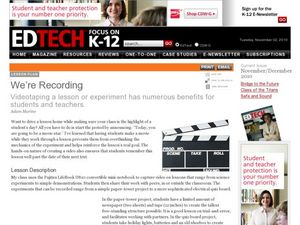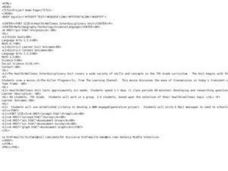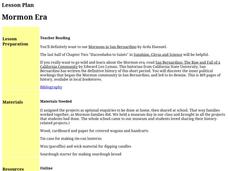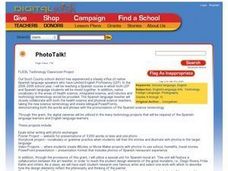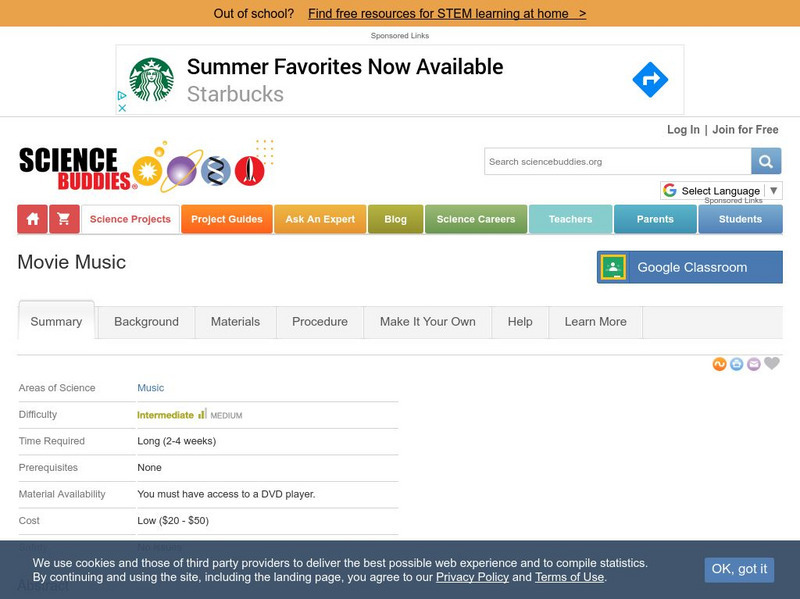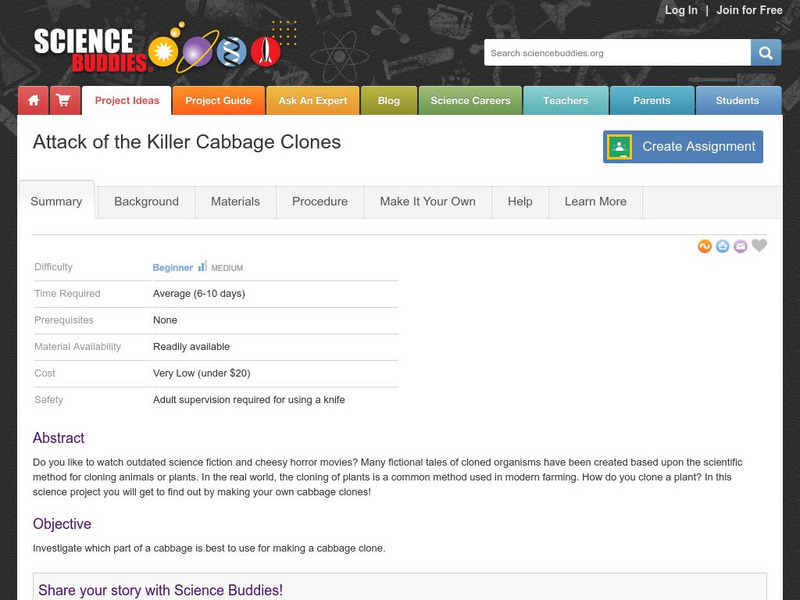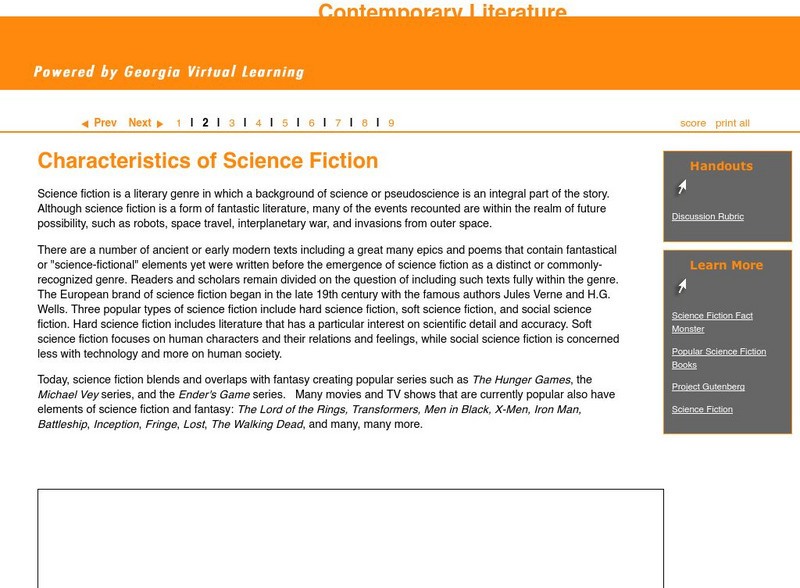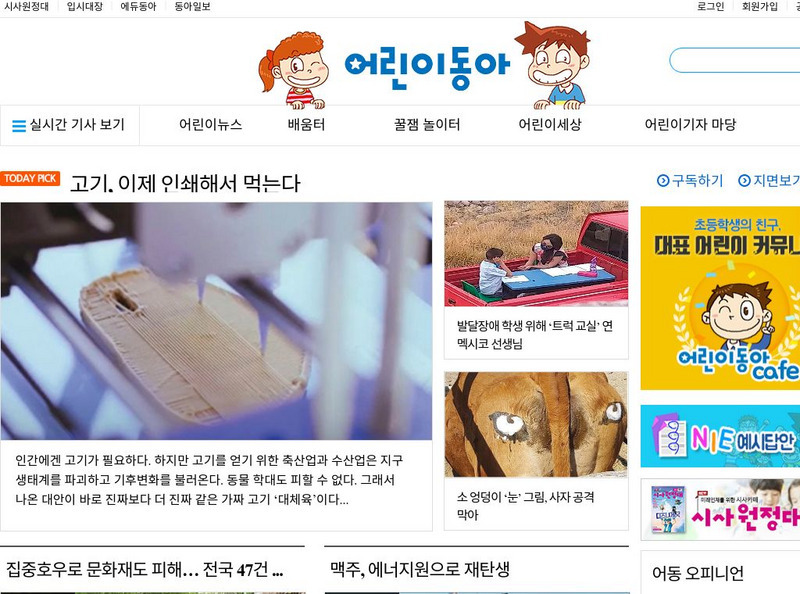Curated OER
Researching Skills: Taking Notes
The how and why of note taking is the focus of a four-page learning exercise. Tips include how to take notes in class, how to prepare note cards for a speech, how to fill out note cards on readings, and where to keep notes. Whether...
Curated OER
First Class First? Using Data to Explore the Tragedy of the Titanic
Students analyze and interpret data related to the crew and passengers of the Titanic. They research information on a Titanic database to illustrate specific statistical conclusions, and whether or not social status affected the outcome.
Curated OER
Buzzing is BEE-lieving
Students investigate insects. In this insect lesson, students explore various insect models and identify the characteristics of each. Students observe insects outside and tally how many insects they observe.
Curated OER
We're Recording
Students record their experiments or lessons using a video camera. In this technology lesson, students explain to the camera what they have learned. They watch these together to help reinforce a lesson.
Curated OER
Health/Wellness Interdisciplinary Unit
Students examine human body systems, research a disease or condition, analyze their family trees to look for health conditions and/or diseases which may be prevalent, discover ratio and proportions of human body, and read novel, The...
Curated OER
Memory Game
Students create cards for a memory game by entering data into a spreadsheet that is then merged into a word processing document. Tutorials are available through links on the activity page.
Curated OER
What Does Sound Look Like?
Students work in small groups or individually to explore and edit an audio file. They identify beats and other features of waveform, find and remove silence in audio, experiment with fade and crossfade and export a clip they have completed.
Curated OER
What is American Culture
Students create what they feel is American Culture using a video camera and capturing 5 frames. They are animating parts of a poem in small groups. They decide the set up, create movable figures, and have a music section. Each person...
Curated OER
Mormon Era
Students learn the history of the Mormons and are able to explore items made during the Mormon era by creating their own by hand. In this Mormon Era lesson, students create covered wagons, can lanterns, candles and sourdough bread as...
Curated OER
Sergey Brin
For this famous person worksheet, students read a passage about Sergey Brin and then complete a variety of in-class and homework activities to support comprehension, including partner interviews, spelling, cloze, synonym...
Curated OER
Stampin' Around Chicago
Students discuss the United States Postal Service and choose an artifact from one decade. For this art lesson, students research how the artifact chosen relates to Chicago and the United States. Students create their own postage stamp...
Curated OER
Back to the Future
Students imagine what it would be like to travel back in time. For this creative writing lesson, students watch parts of the film Back to the Future and examine artifacts from the past. Students write a short story in which they travel...
Alabama Learning Exchange
Battle to the Death: Adding Integers
Young scholars explore the concept of adding integers. In this adding integers lesson, students simulate the battle of the 300 spartans at Thermopylae. Young scholars use colored game pieces to represent positive and negative...
Curated OER
Photo Talk!
Students communicate with Epals. They write letters with photo exchanges
and create a website for presentations of 3,000 words or less and one photo. They
tell their life stories and illustrate with photos in the target language.
V
Curated OER
Cancer City USA
High schoolers investigate a phenomenon known as the cancer cluster. Students determine potential cancer clusters given real data and support their findings using mathematical calculations. High schoolers Create a graphical...
Curated OER
Sensing Somethong
Students are taught that they can gather information about objects using the five senses of vision, touch, smell, taste, and hearing. They are told that some sensing, like sight, is done remotely. Students observe how a camera can...
Science Buddies
Science Buddies: Movie Music
Have you ever seen a great movie and then rushed out and bought its soundtrack? Did the soundtrack bring back the thrill of an action chase? Or the sadness one of the movie's characters felt? Music is a big part of the movie experience....
Science Buddies
Science Buddies: What Is Home Sweet Home to a Bug?
If you had to choose between having your favorite dessert, going to a movie, or spending the night at a friend's house, which would you choose? This project shows you how you can "ask" a sowbug (or pill bug) a similar question in order...
Science Buddies
Science Buddies: Attack of the Killer Cabbage Clones
Do you like to watch outdated science fiction and cheesy horror movies? Many fictional tales of cloned organisms have been created based upon the scientific method for cloning animals or plants. In the real world, the cloning of plants...
Georgia Department of Education
Ga Virtual Learning: Characteristics of Science Fiction
This lesson focuses on the characteristics of science fiction including the three types of science fiction, a list of characteristics from National Geographic. It features links to Fact Monster: "Science Fiction," Goodreads: "Popular...
Science Buddies
Science Buddies: You've Got Permission to Be a Backseat Driver!
You can see what happens to your car's fuel efficiency when it takes you downtown to see a movie, up a hill for a great view, or out for a cruise on a flat country road. This is because a car's fuel efficiency does not remain the same...
Other
Dong a Newspaper: Korean Children's Newspaper
Well-known Korean children's newspaper website. Articles match general interests of elementary to middle school students: reports on world news, movie stars, singers, sports, science, school news, cartoons, writing competition and study...
NC State University
Ncsu.edu: Adventures of the Agronauts
This site is an online science curriculum on how to grow plants on the Moon. There are six lessons that have a glossary also included. There are movies that demonstrate concepts, and teacher resources. The sites topics cover, the Earth,...
Alabama Learning Exchange
Alex: Exploring Slope
The purpose of this instructional activity is to help students see the real world application of slope. The students will view a movie clip of slope, calculate the slope of stairs in the school building, and analyze results.This lesson...



